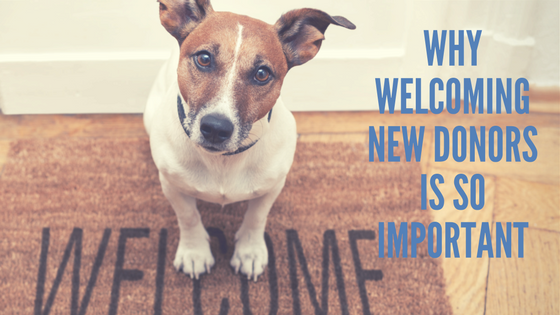Little Green Light is a cloud-based donor management system for fundraisers.
Subscribe to get our latest product updates, best practices and tips to grow your nonprofit.

When your organization receives a gift from a new donor, doesn’t it make your day? You reached a new supporter who believes in your mission, and that’s cause for you to celebrate.
How do you respond to that gift, though? Many of us don’t convey to our new donors that their gift made our day. When we send a standard acknowledgment letter to new donors stating that their gift is tax-deductible, we miss an important opportunity to convey how much their gift means.
That missed opportunity means big losses for our organizations. Donor retention is key to successful fundraising efforts. (Donor retention refers to the number or percentage of donors that contribute to your organization after their first gift). The vast majority of first-time donors won’t contribute again, which means we regularly lose the support of most first-time donors. In fact, The Fundraising Effectiveness Project found that a mere 19% of first-time donors are retained. At one point, those folks cared enough to put their money toward our mission, but they weren’t inspired to give again.
That’s a bleak statistic, but the good news is that there is lots of room for improvement. We can change how we respond to first-time donors so that they know their gift is deeply appreciated. Our goal is to make the first-time donor feel welcome, appreciated, important, and informed.
To accomplish all that, it’s important to move beyond a standard tax acknowledgment letter for the first-time donor. This articles contains straightforward suggestions for how you can create a welcome program for new donors.
The foundation of your welcome program is the acknowledgment letter. It sets the tone for your future communications with these donors.
Things to consider:
We all know that prompt thank-yous to our donors are essential. If you already send thank-yous to donors within 48 hours of receiving a gift, that’s fantastic – keep it up! If the time frame is longer, try to get those thank-you notes in the mail faster.
When donors make contributions online, they likely receive an automatic receipt, which includes the standard language about how their gift is tax-deductible. That’s great for speediness, but this automated response may feel more transactional than welcoming.
Make that first gift acknowledgment feel friendly and welcoming. Convey to the new donor what their gift helps accomplish. Write your acknowledgments so that they are donor-centric. Take language about your organization out and make sure the donor connects directly to the impact of their gift. Need some ideas? Check out our blog article, 3 quick tips for writing donor-centered thank you letters. The acknowledgment should include language that is welcoming and inclusive – avoid using jargon.
Yes, you read that right. Want to really welcome a new donor and make them feel special? Follow up with another thank-you within two or three weeks of the first acknowledgment. The first acknowledgment was donor-centric and contained gift details and standard tax language. The second thank-you won’t include tax language. Its purpose is to reinforce your appreciation of the donor. It’s your chance to connect with the donor more personally, and to reiterate the importance of their gift. It needs to make the donor feel special. Some ideas include a handwritten thank-you card, a phone call, or a personal email.
This two-part acknowledgment for first-time donors is warranted even if the first donation is a small one. Don’t scrimp on expressing appreciation for small donations! It’s rare that you know with certainty which first-time donors have the means or passion to become loyal supporters. Even if they can’t make big contributions, they may become ardent advocates for your organization and encourage others to give – if they feel appreciated.
Welcome Materials
Now that you thanked your new donor twice, they feel recognized and appreciated. They understand what their gift makes possible. What’s left? You need to inform them about your organization so they feel connected to it.
To accomplish this step, develop welcome materials to serve as an orientation to your organization. Like the acknowledgment letters, these materials need to be donor-centric. Avoid a lengthy background on your organization. Instead, show the impact that donors have. For example:
“Founded in 1822, the Community Society is a well-respected organization…”
vs.
“Each year, donors to the Community Society ensure that hundreds of school-age children like Violet have access to books and art supplies”
Your welcome materials share the positive impact of your donors so that they understand the importance of your mission and feel connected to it. Welcome materials don’t have a shelf-life and will be relevant a year or two from now. You want your welcome program to make your first-time donors feel so good that they tell other people about your organization. The welcome materials should be something that the donor can even pass along to a friend or neighbor.
Ongoing Communication
Make sure to include first-time donors in your organization’s mailing list of newsletters, emails, and updates. When these first-time donors feel connected to your organization, they’re more likely to become repeat donors.
First-time donors won’t necessarily become repeat donors. If fact, it’s more than likely that they won’t unless you implement a welcome program. New donors need to special, important, and informed. Develop a welcome program to cultivate relationships with first-time donors and increase donor retention for your organization.
Ready to try LGL? Get your first 30 days free. No credit card required.